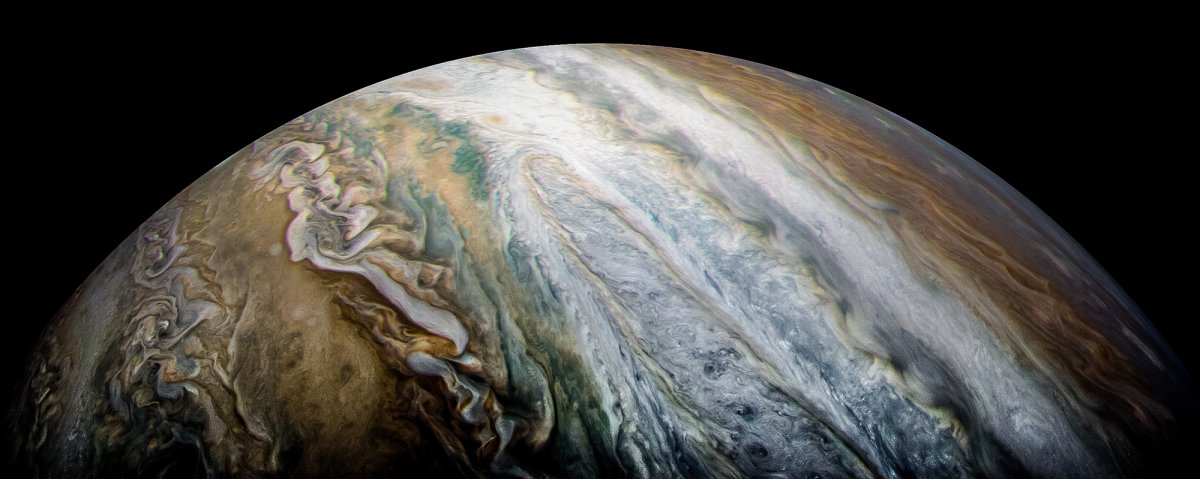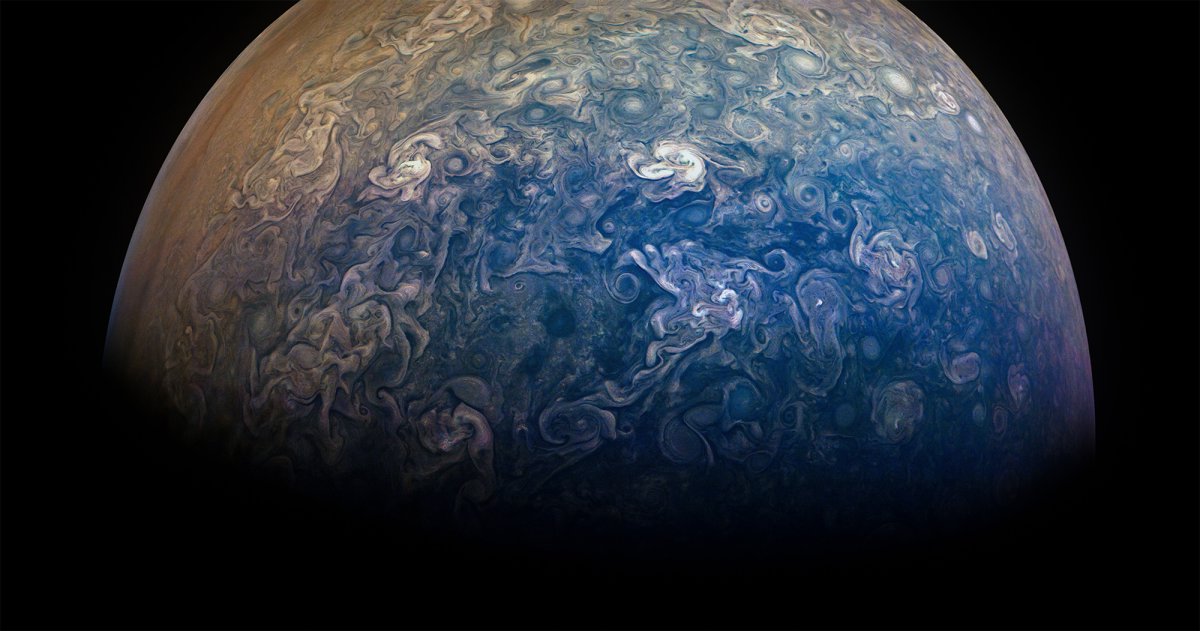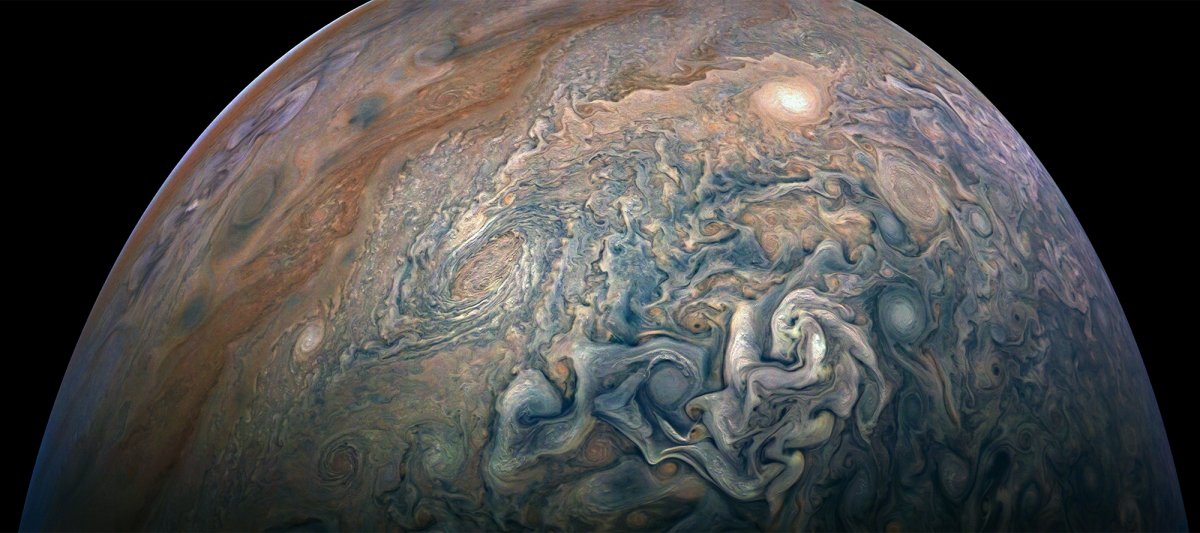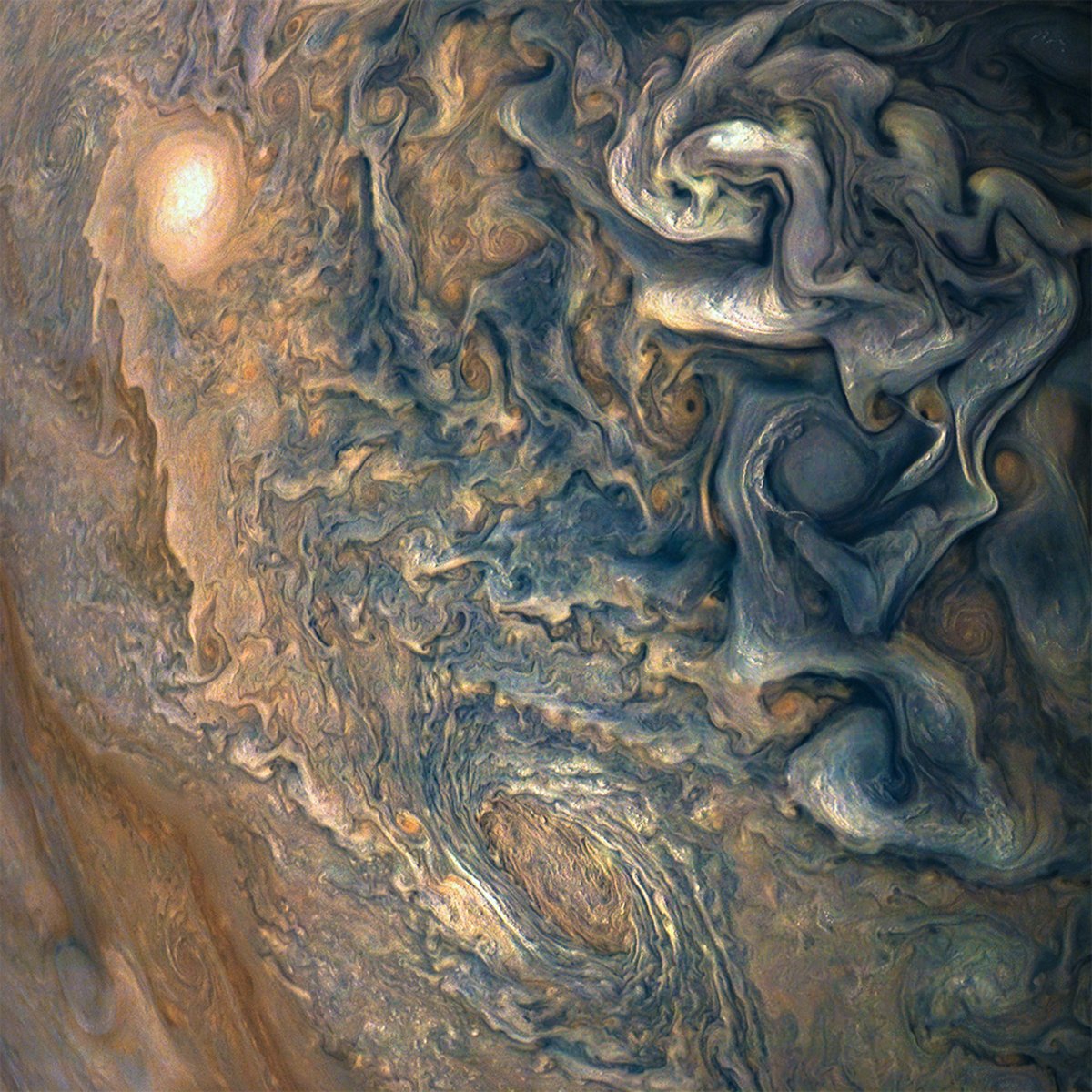Researchers at NASA and the Southwest Research Institute uploaded the raw image data to their websites in late December. Since then, dozens of people have processed the black-and-white files into gorgeous, calendar-ready colour pictures.

(NASA/JPL-Caltech/SwRI/MSSS/Kevin Gill)
During each 53.5-day orbit, called a perijove, JunoCam records a new batch of photos.

(NASA/JPL-Caltech/SwRI/MSSS/Kevin Gill)
The spacecraft is the only one ever to fly above and below Jupiter's poles.

(NASA/JPL-Caltech/SwRI/MSSS/Gerald Eichstädt/Seán Doran)
Researchers are trying to make sense of the gas giant's swirling mess of polar cloud formations, like these captured during Juno's tenth perijove.

(NASA/JPL-Caltech/SwRI/MSSS/Gerald Eichstädt/Seán Doran)
The planet's many bands of cloud groups are also a scientific puzzle.

(NASA/JPL-Caltech/SwRI/MSSS/Seán Doran)
Some of the storms seen on Jupiter are larger than Earth's diameter.

(NASA/JPL-Caltech/SwRI/MSSS/Gerald Eichstädt/Seán Doran)
A full set of JunoCam images looks like this:

(NASA/JPL-Caltech/SwRI/MSSS/Kevin Gill)
But some fans of the spacecraft have figured out how to stitch them together into time-lapse movies.